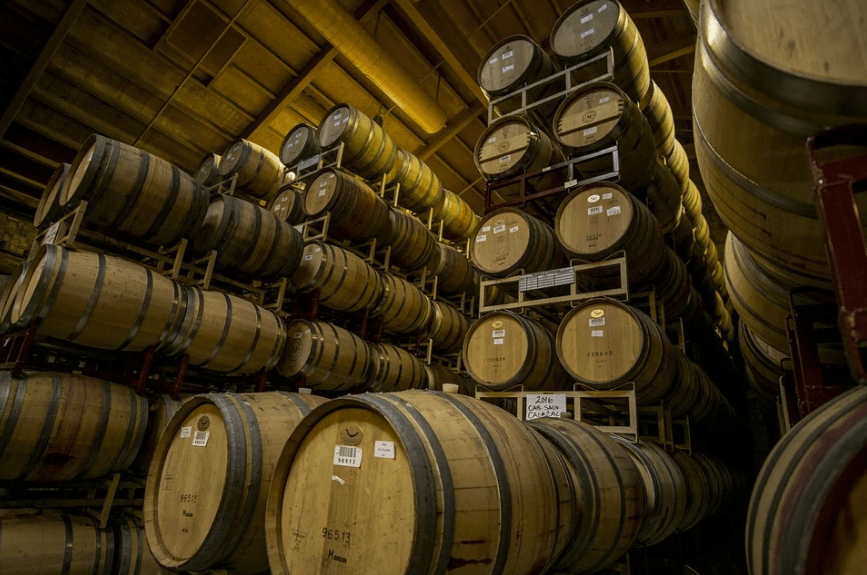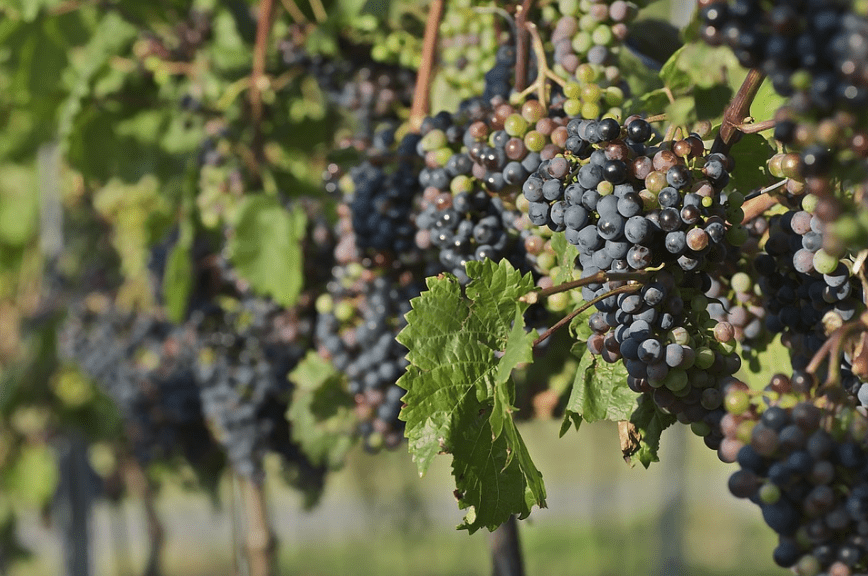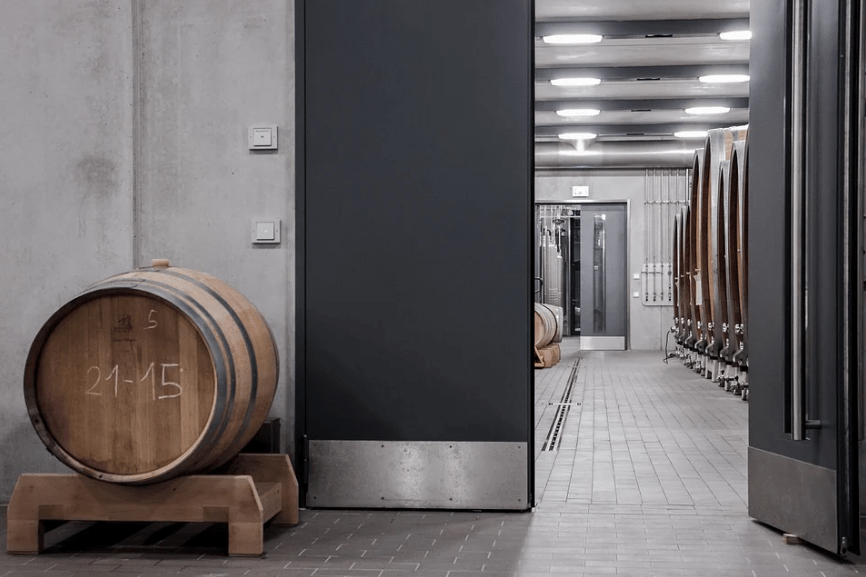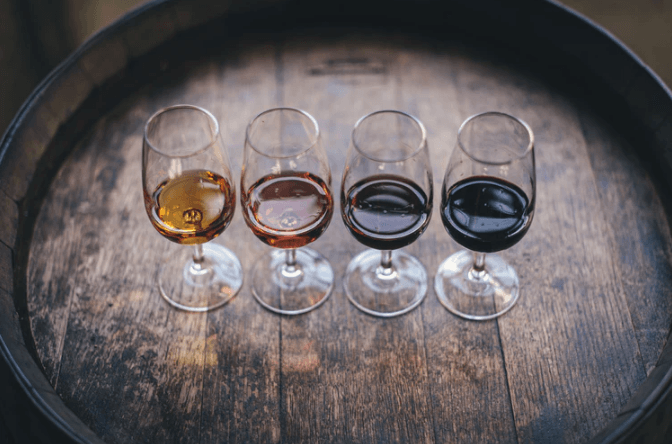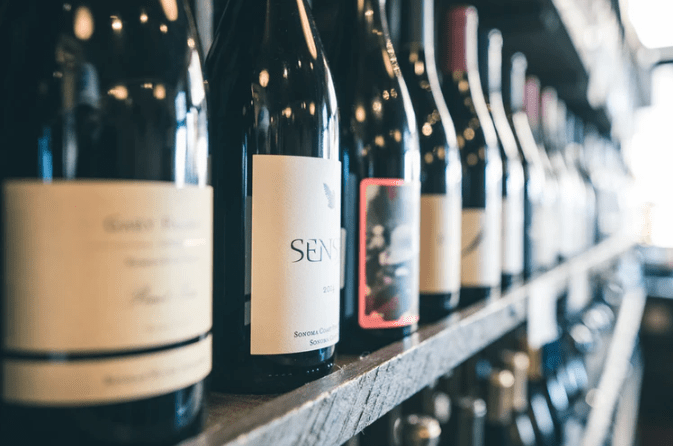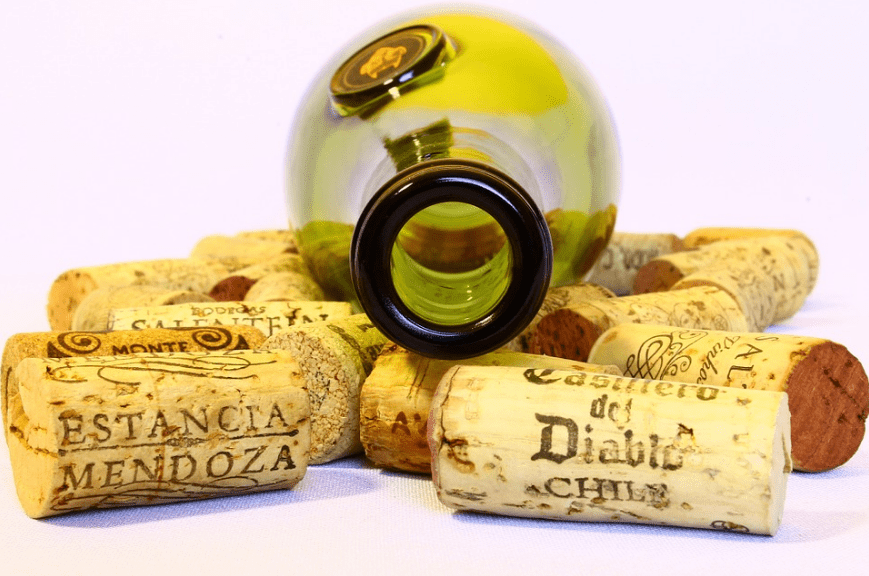Winemaking is what the production of wine is called. It is also called enology, which is the science of all aspects of winemaking and wine. However, enology does not study vine growing or harvesting of grapes, as those areas belong in the subfield of viticulture. A person who studies enology is an enologist. The term “enology” came from the Greek word “oinos,” which means “wine,” and “logio,” which means “study of.”
Enology focuses on the study of the winemaking process, which includes crushing, fermentation, racking, bottling, aging, and even up to serving wine. It studies the science of the complex chemical reactions that happen in the grape juice as it turns into wine. There are also degrees in enology that are available at the BS or MS level, and as well as careers in enology, which include working as a winemaker or in a laboratory to study different winemaking processes.
If you love drinking wine and you’d like to learn more about how it is made, you’re in the right place. Today, we are going to help you learn about the science behind making wine.
The Grapes
The quality of the wine is determined mainly by the quality of the grapes more than any other factor. Grape quality can be affected by different things, such as weather during its growing season, soil minerals and acidity, the time they are harvested, and the pruning method used. Since grapes are sensitive to weather patterns, winemaking is greatly affected by climate change.
It is usually in September until early November in the northern hemisphere and February until early March in the southern hemisphere, when grapes are harvested from the vineyard. For winemaking, the most common type of grape is Vitis vinifera, which comprises almost all variations of European origin. To learn more, read our post on Which Grape Varieties Are Best Used To Make The Best Wine?
Fruit Preparation
In winemaking, it is very important to control the microorganisms that grow. Since bacteria and wild yeasts are everywhere, wine used to be fermented into alcohol. However, this practice may produce unpleasant flavors, and some can even create toxins. Therefore, to make sure that only the microbes you have chosen to grow are present, all of the equipment in making wine should be sterilized.
When preparing the fruit, stalks and leaves are removed. Some also remove the skins of the grapes, but this will make them lose a lot of color and flavor. Destemming is also different for red and white winemaking. In white winemaking, only the fruit is crushed, and its stems are placed in the press with the grapes. Having the stems in the mix facilitates pressing by enabling the juice to flow past flattened skins. These gather at the edge of the press. Red winemaking, on the other hand, requires the removal of stems before fermentation as they contain high tannin, and these could also give the wine a vegetal aroma like that of green bell peppers.
After removing the stalks and leaves, the fruit will be crushed in a bucket. The fruit can be sterilized by adding boiling water to the bucket. Though it has the advantage of killing most microorganisms, it may also affect the flavor of the fruit. For an alternate method, normal tap water can be used and added with a Campden tablet, which is a sulfur-based product used to sterilize wine, cider, and beer.
Crushing and Primary Fermentation
Crushing is the process of squeezing the grapes gently, breaking their skins to begin releasing their contents. In traditional and smaller-scale winemaking, the grapes are sometimes crushed by trampling them barefoot or by using inexpensive, small-scale crushers. But in large wineries, a mechanical crusher is often used.
Grapes normally contain yeast, and they often make the fruit look powdery. This natural yeast can be used for primary or alcoholic fermentation. However, since this could give unpredictable results based on the precise kinds of yeast that are present, cultured yeast is frequently added to the must. One problem when using wild ferments is that that fermentation might not go to completion, which is when some sugar remains unfermented. When this happens, the wine will end up tasting sweet even if it should be dry. Most of the time, wild ferments lead to creating unpleasant acetic acid or vinegar as a byproduct.
During the main fermentation, the yeast cells feed on the sugars in the must, and they multiply. This process produces carbon dioxide and alcohol. The taste of the end product and the speed of the fermentation are affected by the temperature during fermentation. For making red wines, the temperature is usually 22°C to 25°C. For white wines, the temperature is from 15°C to 18°C. A gram of sugar that is converted is equal to half a gram of alcohol that is produced. Therefore, to achieve a 12% alcohol concentration, the must need to have about 24% sugars.
To calculate the sugar percentage of the must, you need to measure its density and weight using a special hydrometer that is called a saccharometer. When the sugar of the grapes is too low to get the desired alcohol percentage, more sugar can be added. However, in commercial winemaking, the added sugar is subject to local regulations.
Alcohol that has more than 12% can be achieved by using yeast that can survive high alcohol. There are yeasts that can make 18% alcohol in the wine. However, extra sugar is needed to make a high alcohol content. During or after the fermentation stage, a secondary fermentation called malolactic fermentation can also take place. During this fermentation, specific strains of bacteria turn malic acid into milder lactic acid. This is usually started by immunization with desired bacteria.
Pigeage
Pigeage is a French word that pertains to the management of acidity and secondary pressing of grapes in fermentation tanks. There are certain types of wine wherein grapes are placed through a crusher and poured into open fermentation tanks. When fermentation starts, the skins of the grapes are pushed to the surface by carbon dioxide gases released in the fermentation process. Since the skins of the grapes are the source of the tannins, they need to be mixed through the liquid daily or punched, which is traditionally done by stomping through the barrel or container.
Cold Stabilization
Cold stabilization is the method used in winemaking that helps reduce tartrate crystals in wine. These look like grains of clear sand and are sometimes called wine diamonds or wine crystals. These are formed by the mixing of tartaric acid and potassium and may appear to be residue in the wine, but they are not. Cold stabilization is done after fermentation. In this step, the wine’s temperature is dropped to close to freezing for up to 2 weeks. This way, the crystals will separate from the wine and stick to the sides of the holding vessel. When the wine is drained, the tartrates are left behind. These may also form in wine bottles that have been stored under very cold conditions.
Secondary Fermentation and Bulk Aging
The secondary fermentation and aging process takes about three to six months, and the fermentation continues very slowly during these processes. The wine is kept in an airlock to keep it from oxidation. The residual yeast cells and other fine particles from the grapes are allowed to settle while proteins from the grape are broken down. Also, potassium bitartrate will precipitate, and this process can be improved by cold stabilization, which we’ve mentioned earlier. This process makes the originally cloudy wine clear. During this process, the wine can be racked to remove the lees.
Large stainless-steel vessels are usually used in secondary fermentation, and these have a volume of several cubic meters. Oak barrels or glass demijohns can also be used, depending on the goals of the winemakers. A stainless-steel barrel or other material that has no influence on the final taste of the wine is used to ferment unoaked wine. Depending on the taste that the winemaker wants to achieve, it could be fermented mostly in stainless-steel to be briefly put in oak.
Glass carboys are often used by amateur winemakers. These usually have a capacity of 4.5 to 54 liters or 1.2 to 14.3 US gallons. The type of vessel used vary on the amount of wine that is being made, the grapes used, and the intents of the winemaker.
Malolactic Fermentation
This type of fermentation happens when lactic acid bacteria metabolize malic acid and creates lactic acid and carbon dioxide. This is done either as a planned procedure wherein specially cultivated strains of such bacteria are introduced into the maturing wine. However, this can also happen by chance if uncultivated lactic acid bacteria are present.
This type of fermentation can help improve the taste of wine that has high levels of malic acid. It’s because a higher concentration of malic acid causes an unpleasant, harsh, and bitter taste, unlike lactic acid that is less sour and milder.
The use of lactic acid bacteria is why some chardonnays taste “buttery” because of the production of diacetyl by the bacteria. The majority of red wines go through complete malolactic fermentation, both to lessen the acid of the wine and to remove the chance that malolactic fermentation will happen in the bottle.
In white wines, the use of this type of fermentation varies during the winemaking process. Lighter wines like Riesling usually do not undergo malolactic fermentation. The white wines that are commonly put through this process are fuller ones like barrel-fermented chardonnay. But there are also times when a partial fermentation is done.
Blending and Fining
Before bottling, different batches of wine are mixed to achieve the desired taste. The perceived insufficiencies of the wine can be corrected by the winemaker by mixing wines from different grapes and batches that were made under different conditions. Some adjustments can be as easy as changing acid or tannin levels, while some are as complex as blending different vintages or varieties to get a consistent taste.
Also, during winemaking, fining agents are used in removing tannins and microscopic particles, and as well as reduce astringency, which can all make the wine cloudy. The fining agents used depends on the winemaker, and they may vary from product or batch, depending on the grapes of a certain year. One of the most commonly used for wine fining is gelatin.
In addition to gelatin, other fining agents for wine are usually derived from animal products like egg whites, bone char, skim milk powder, and egg albumin. There are also some aromatized wines that contain egg-yolk extract or honey. There are also non-animal-based filtering agents that are usually used, like bentonite, cellulose pads, and paper filters.
Preservatives
Sulfur dioxide is the most common preservative used in making wine. It can be added in different forms, such as liquid sulfur dioxide, potassium metabisulphite, or sodium. In addition to sulfur dioxide, another useful preservative is potassium sorbate.
There are two primary actions that sulfur dioxide has. First, it is an anti-microbial agent, and second, it is an antioxidant. When making white wine, sulfur dioxide can be added before fermentation and immediately after the alcoholic fermentation is complete. When it is added after alcoholic fermentation, it may prevent or stop malolactic fermentation and bacterial spoilage. In addition to that, it can also help protect the wine against the damaging effects of oxygen.
For red wines, sulfur dioxide can be used at high levels before fermentation to assist in color stabilization. If not, it is used at the end of malolactic fermentation and performs the same functions as in white wine.
When sulfur dioxide is not used, wines can easily suffer from bacterial spoilage no matter how clean the winemaking method is. Potassium sorbate, on the other hand, is effective for controlling the growth of fungal, which includes yeast, especially for sweet wines in bottles. However, it is important that the wine is sterile bottled or has enough sulfur dioxide to inhibit the growth of bacteria. Sterile bottling is included in the filtration method.
Filtration
Filtration is also an important step in winemaking. It is used to do two things, which are clarification and microbial stabilization. In clarification, large particles are removed, as these affect the visual appearance of the wine. Microbial stabilization, on the other hand, is the removal of organisms that affect the stability of the wine, which reduces the chances of re-fermentation or decomposition.
The filtration method may also lighten the color of the wine. Microbial stabilization does not suggest sterility, such as killing or removing all forms of life and other biological agents. It just means that a large amount of yeast and bacteria have been removed to a harmless level to make the wine stable.
Wine clarification, on the other hand, can occur naturally by placing the wine into refrigeration at 35°F or 2°C. It may take about a month for a wine to settle and be clear. There are no chemicals needed for this process.
Bottling
Bottling is a challenging and dangerous stage, as the wine can catch the “wine disease” and turn into vinegar. To prevent this from happening, using a Campden tablet, which we’ve mentioned earlier, is the key. The sulfur dioxide released into the vessel will kill the bacteria. This can also act as an antioxidant during bottling.
Wine bottles are usually closed with a cork. But today, there are now alternative wine closures being used, such as screwcaps and synthetic corks, which are less vulnerable to cork taint. The last step is adding a capsule to the top of the bottle. This is then heated for a tight seal.
Aging
Wines will change continuously when left in a cool dark place. Their flavors and aromas will develop and improve. However, this is a very complex process, and it’s not possible to predict from one bottle to another when flavor and aroma will peak. Through the aging process, there are interactions between hundreds of different compounds. All of these have an effect on the ultimate flavor, aroma, and structure of the wine.
The tannins are the third most important feature of the flavor of a wine, next to sweetness and acidity. These are phenolic compounds that are common in darker fruits like red grapes, especially on their skins. The tannins bind to the proteins in people’s saliva, stopping its ability to lubricate the mouth, which causes a crumpling, astringent feeling. There are some fruits that do not have tannins, like strawberries. This means that they do not have the “mouth feel” of good wines. For these fruits, tannin-rich black tea is added.
When wine ages, excess tannins bind slowly in long chains and fall to the bottom of the bottle as sediment. This allows the wine to be mellow. The more tannins a wine contains, the longer it is needed to be aged. For example, if you make elderberry wine, it might need two years before it reaches its peak. But some wines can be enjoyed after six months of aging.
Conclusion
It is indeed fascinating to learn the science behind winemaking. While wine can be consumed fast during events or dinner, its production process takes a lot of work and time to complete. Therefore, the next time you buy a bottle of wine for dinner or for a special occasion, you now know the scientific processes that it had gone through before it became the delightful beverage that you will be enjoying.
If you’d like to learn more about wine, you can also check out our Guide to Wine Tours.

